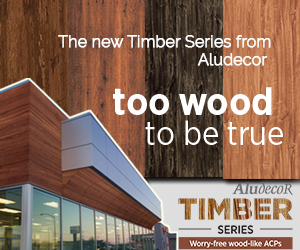The aluminium composite panel, abbreviated as ACP panel, is a three-layer structure with an exceptional mechanical performance at a low weight. For ACP sheet front elevation design, our valued clients widely value its qualities, such as exquisite finishing and eye-catching design. Apart from the facade of a building, the ACP sheets may be used for various exterior and interior purposes. Nonetheless, the current trend will continue to expand over time. Various products have been developed in the ongoing hunt for the ultimate exterior cladding material and ACP sheets are taking the lead these days. Engineers and architects adhere to extremely high standards in the construction of exterior cladding because of the harsh circumstances found at high altitudes, particularly the ever-changing temperature, direct exposure to wind, high humidity, and limited ventilation. They choose huge amounts of ACP panels based on these reasons. Such a wide range of ACP sheets options might become a deciding factor. To satisfy the demands of a given application, ACP sheets must have particular qualities. ACP is too thin, flat, aluminium sheets combined with a non-aluminium core as a cladding material. A protective coating or application of one material over another is referred to as exterior cladding. Cladding is used in construction to offer thermal insulation, weather protection and improve structures’ look. Cladding is essentially an assemblage of materials, each of which has its significance.
Also, read: https://blogs.aludecor.com/the-uniqueness-of-indian-architecture/
Front Elevation Design Trends
1. The architectural elevation should always be harmonious with a degree of uniformity. It gives the impression that the elevation’s many sections and components are one rather than separate pieces. There are several approaches to achieving unity- one approach is to repeat the element across the elevation and establish a pattern with ACP Panels. Another option is to build a grid-like structure by continuing a line visually or literally or by continuing a pattern, guiding the observer’s eye through the elevation. Alignment can make this a lot easier.
2. In the elevation design, ’emphasis’ is necessary to lead the observer’s attention to the entrance. There are several methods for achieving focus. Using Contrast – It can be achieved by colour, texture, or form of ACP Sheets. With the assistance of Isolation – By isolating one element from a pattern, the rest seems to be a focus point. Significant components – They draw attention and serve as a focal point. A distinguishing feature on a plain indistinctive backdrop might also suffice.
3. When a design is consistent and simple, it might become monotonous; to avoid this, diversity is required. At first, these principles may appear at odds, yet the design is known as “diversity within unity.” Geometry can be maintained by utilising similar forms across the elevation, such as rectangular or circular units, although they can be changed in size or colour by moulding ACP Sheets. The shapes and sizes of the pieces may be modified, and the colour of the elements can be kept the same or vice versa. Modifications per unit, such as tilting, twisting, stretching, or folding, can be utilised with the same base units or pieces of the same size.
4. ‘Balance’ is another crucial aspect to consider while designing an architectural elevation. It can be accomplished by symmetry. It’s been done this way since the beginning of time. Modern architects, on the other hand, have developed new indirect approaches. The latest trend is asymmetrical balance, which may be accomplished by altering size, colour saturation, or texture of Aluminium Composite Panels. For example, a large element with light colour saturation may be balanced by a smaller element with a higher contrast colour saturation. A larger but much simpler shape may also balance a smaller, more complicated form.
5. There is a rhythm to every aesthetically pleasing architectural elevation. It may be created by repetition and pattern, just like unity, but from a different perspective. The beat in music is a more well-known example of rhythm. The components operate as a rhythm in architecture. It can be caused in a variety of ways.
• Progressive Rhythm Flowing Rhythm • Repetition • Alternating Repetition
The Aluminium Composite Panel is the most popular material for architectural elevation designs because of its fire and weather resistance features. The architectural section of Aludecor has extensive expertise in designing ACP sheets for front elevations.The pricing of Aludecor’s ACP panels for front elevation is quite reasonable, and it includes all of the latest contemporary designs.
To know more about Aludecor, log ontowww.aludecor.comor call us on our toll-free number1800 102 0407.



